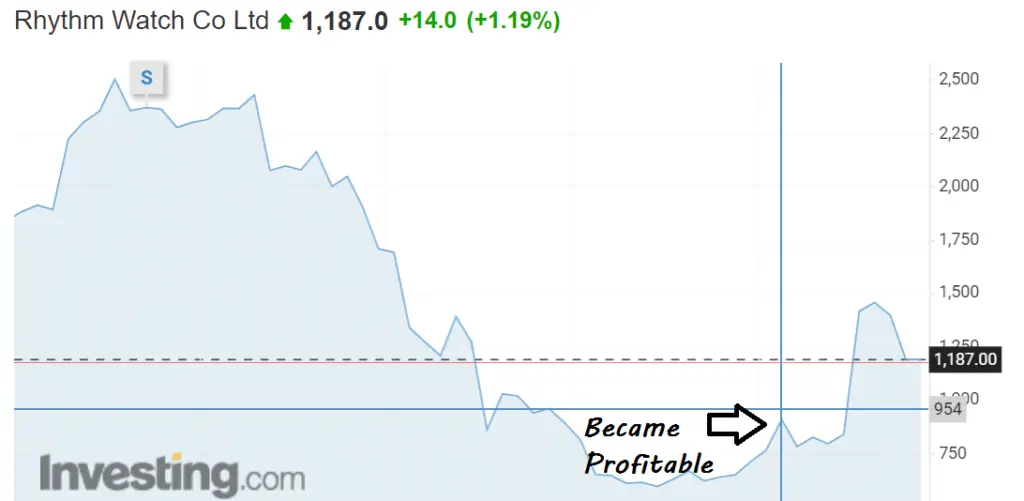
Is it possible to have the best of all worlds? Not usually, but in some stock markets that dream really is a reality.
Getting deep value high yield dividend growth stocks seems to be the norm in countries like Japan at the time of this writing. There may be other countries that follow this path, but currently there seems to be no better country for dividend growth investing than Japan right now.
It’s common knowledge that abnormally high yields go hand in hand with poor quality stocks. This yield is often cut to preserve capital in a failing company. Yet, the very opposite seems to be happening in many small Japanese stocks.
In these cases it seems that the yield is rising faster than the stock price. In other words, the dividends are growing. If you’re curious how you can invest for retirement and cash flow while growing your capital I explore deep value high yield dividend growth investing below.
Deep Value Dividend Growth Investing
In order to outline how I approach deep value dividend growth investing, we need to explain how dividend growth investing in general works.
Dividend growth investing takes advantage of long term dividend increases to steadily grow cash flow in quality companies. It relies on consistent dividend raises and long term tax advantages.
Alternatively, deep value-high yield dividend growth investing looks more at yields and capital appreciation as compared to dividend growth rate and consistency.
Lost Potential on Paltry Megacap Dividend Growers
Its a bit sad, there are a lot of dividend growth investors touting the dividend growth potential of Apple.
Although I can’t blame them too much. When I first heard Apple started paying a dividend back in 2012 I rushed out to buy it. It was exciting, tech stocks were finally paying dividends! Yet today, it seems that excitement has reached a fever pitch.
Even today, Apple has a ton of cash and is returning it to shareholders. In fact, you can buy into this amazing dividend yield of, drum roll please, .54%!
Now, to a dividend growth investors defense its about how quickly the dividend is growing and how much their dividend will cash flow in the future. If we look at the annualized dividend growth rate it sits at 7.72%. So it looks like .54% is not too bad in the grand scheme of things.
It Really is That Bad
Well, I’m sorry to be the bearer of bad news but, it is pretty bad. Its rather pathetic actually, not only are you earning a paltry return today, but you are earning one far into the future. Not only that, but you have a massive potential to lose a portion of your principle.
You heard that right! You can lose the money you invested!
This is because the shares are so incredibly overvalued when they revert to the mean as many value investors believe. You are in danger of losing a large portion of the overall value.
There are Better Dividend Growth Opportunities
If you venture off the beaten path there are glorious opportunities for the dividend growth investor. Far to many of these types of investors like to stay inside the safety of their home country and invest for the long term.
But, you can set yourself up for an even brighter future if you rebalance your dividend portfolio internationally.
As I wrote about in my Seeking Alpha article there are many Japanese dividends growing at a very fast pace. You don’t even have to do your own research, Wisdomtree already has all of the data.
Real Life Japanese Dividend Growth Examples
You really don’t have to go very far to find examples of dividend growth investing in Japan. You don’t even need to take Wisdomtree’s word for it.
Two of the most glaring examples of deep value dividend growers that I found and wrote stock analysis for are:
Both, companies are growing dividends and better yet, their dividends are currently over 3 and 4 percent! The best part is their payout ratios both sit at around 30% as do many Japanese stocks.
In case you were wondering both companies have a yearly dividend growth rate that exceed Apple, sometimes in excess of 20%.
Now, I know what you may be thinking, is the company actually growing?
You may have me there, the company may be growing much slower than Apple. In the case of Hosiden its nearly the same growth in revenues. For a small company that’s a bit disconcerting and probably why its a deep value stock to begin with.
However, wouldn’t you rather buy a stock growing at around the same rate and get more value? In both of the above cases you are buying dollars for 80 cents.
Focusing on High Dividend Yielding Turnarounds
Investing in deep value companies that are losing money is a precarious strategy. You may have the potential to make a lot more money investing in these types of companies as a group, but individually you are bound to do worse than if you invested in only profitable dividend companies.
But, if you were to get the best of both worlds and invest in dividend yielding turnarounds you could exploit your investment opportunities and explode your stock portfolio.
Japanese Deep Value Turnarounds Move Slowly
While its still to soon to posses any kind of hard data on this phenomenon it seems like Japanese companies move much more slowly when it comes to turnarounds. It’s almost as if the public doesn’t believe the profits are sustainable. Two lost decades can do this to a nation.
One stock I invested in where you would have had ample opportunity to invest in was Rhythm Co. formally known as Rhythm Watch Co. In fact this stock gave you an entire two quarters to invest in a newly profitable company, before it rose in value.

This is not always the case as there are many factors at play when a turnaround is taking place. One of which depends on the share float and number of people following any particular stock. This is just one example that flew under the radar for quite some time.
Spotting a Potential Turnaround
It takes a lot of analysis to spot a potential turnaround. In many cases you may just be getting lucky. That’s why its important to invest in super cheap companies with a lot of assets.
One example of a stock I lucked out on was Big 5. Its rapid profitability was completely unexpected yet I was buying it at such a cheap price the risk reward potential was huge.
If you are curious about how I potentially find turnarounds before they happen you can take a look at my recent Futaba analysis.
The Problem with Deep Value Dividend Growth Investing
Deep value dividend growth investing does have its own set of problems. It really is only available to retail investors with smaller amounts of capital. Which gives many of you readers an advantage. However, as time goes on you may begin to see some flaws.
- Less buy and hold, more buy and rebalance. This could lead to more taxable gains.
- Dividend increases are inconsistent.
- Japanese dividends are not quarterly and less holdings create cash flow issues.
It really depends on how active of an investor you are willing to become. A lot of analysis is required to run a proper deep value dividend growth portfolio. Not only that but taxes could become a real issue if you are investing in a taxable account.
If you are able to invest this way in a retirement account then the possibilities are endless, however taxable gains can become a real issue and many brokerages won’t let you invest your retirement in small cap overseas holdings.
The Deep Value Dividend Growth Experiment
If you love investing in dividends and buying stocks for a bargain. Follow along on my journey to uncover the most undervalued dividend growth stocks on the planet.
I outline the nuances of investing from a macro and micro point of view all while tracking long term performance.
One takeaway from this article you need to understand is that markets are always in flux and this article could apply to any country in the future.
Disclosure: I currently have a position in Hosiden, and FJ Next. I wrote this article myself, and it expresses my own opinions. I am not receiving compensation for it from Hosiden, FJ Next or any interested parties. I have no business relationship with any company whose stock is mentioned in this article.
